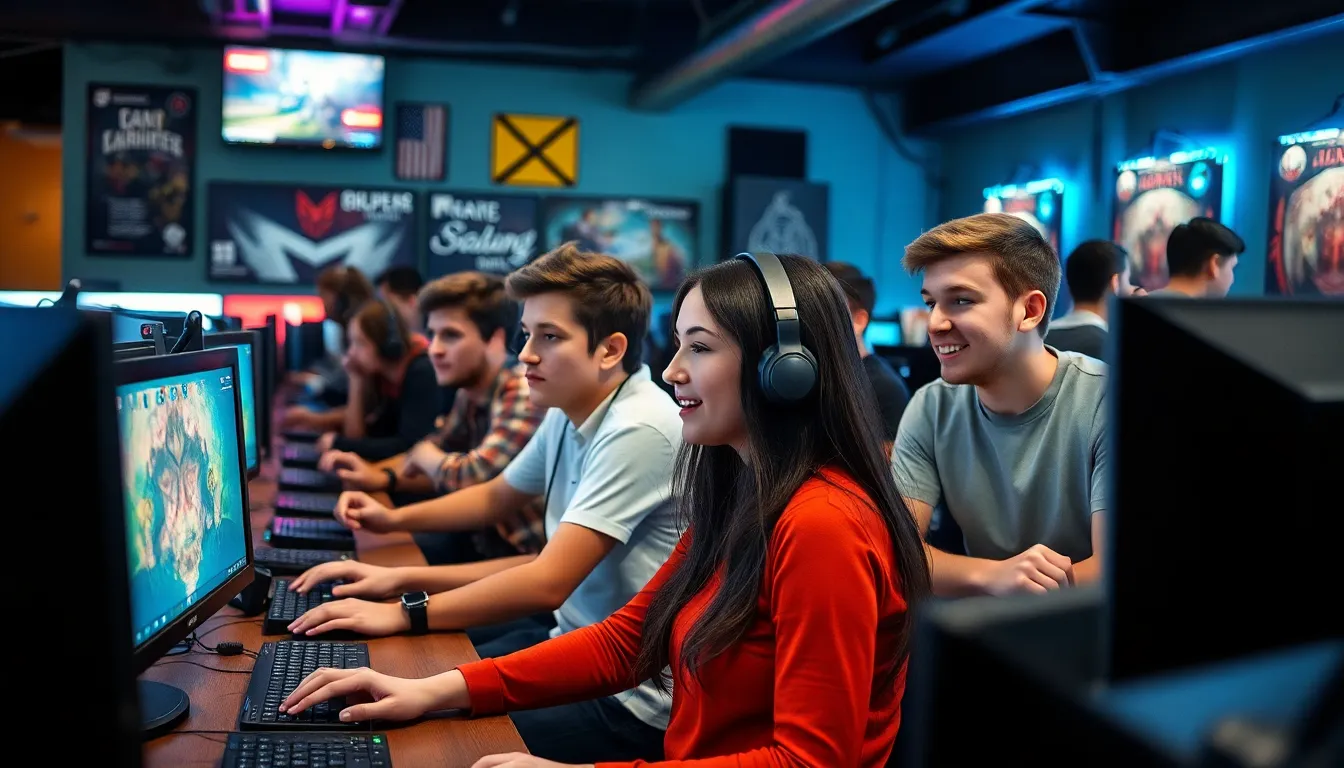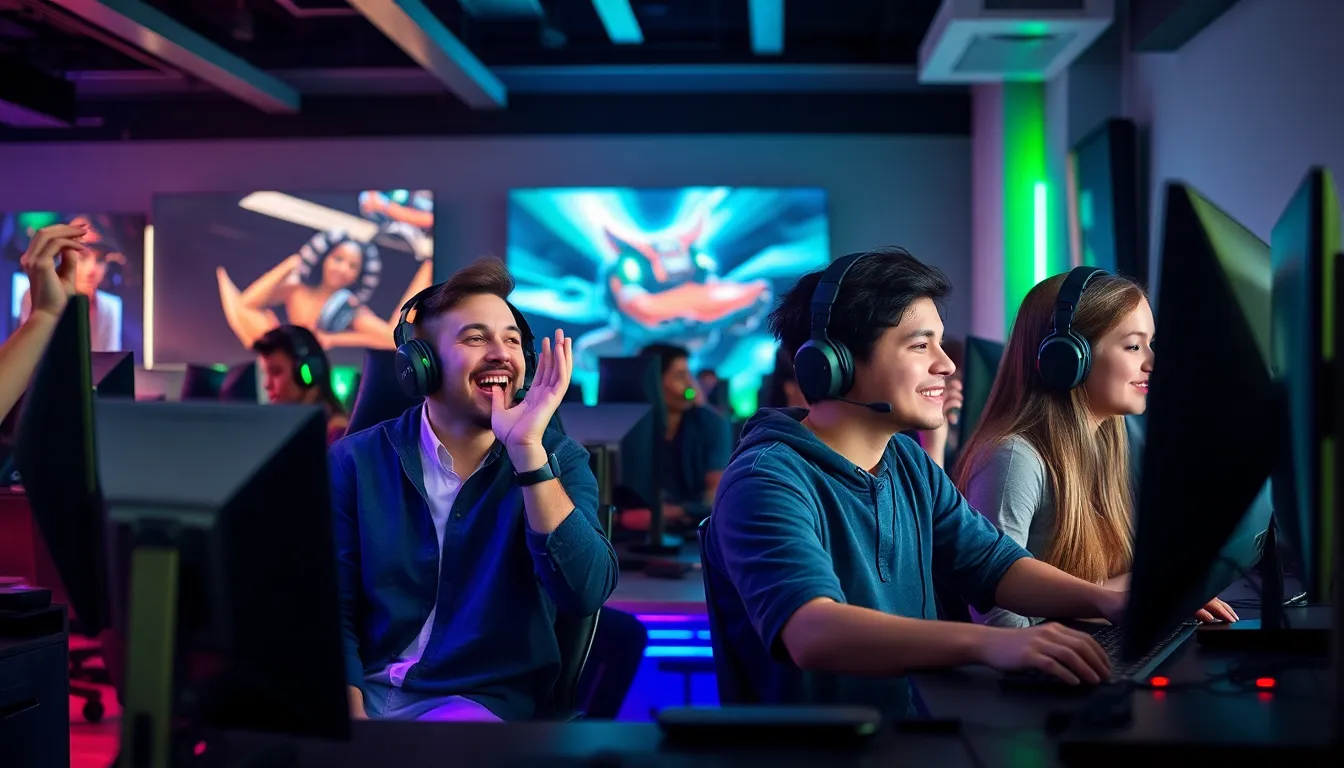In a world where gaming consoles battle for supremacy, the PC gaming audience stands tall, wielding their mice and keyboards like seasoned warriors. This crowd isn’t just playing games; they’re crafting epic experiences, pushing hardware to its limits, and debating the merits of RGB lighting as if it were a matter of national security. With a passionate community that thrives on customization and competition, PC gamers have turned their hobby into a lifestyle.
But who exactly makes up this vibrant demographic? From casual players seeking the latest indie gem to hardcore enthusiasts chasing frame rates like it’s an Olympic sport, the PC gaming audience is as diverse as the games they play. Understanding this group is crucial for anyone looking to tap into the booming world of PC gaming, whether for marketing, game development, or simply trying to keep up with the latest memes.
Table of Contents
ToggleOverview of PC Gaming Audience
PC gaming audiences exhibit high levels of engagement, comprised of individuals varying in age and skill. Casual players make up a significant portion, often drawn to accessible titles and multiplayer experiences. In contrast, hardcore enthusiasts invest heavily in both hardware and software, seeking optimal performance and immersive gameplay.
Data from the Entertainment Software Association shows that around 50% of American gamers engage in PC gaming. Gamers frequently customize their setups to enhance gameplay and express personal style, with communities forming around sharing modifications and tips. Enthusiasts frequently gather online to discuss hardware upgrades, offering insights into the latest trends and technologies.
Demographics reveal a diverse audience, including various age groups. Approximately 40% of PC gamers fall within the 18-34 age range, while players aged 35 and older account for a growing segment. This shift indicates a maturing audience, often seeking nostalgic titles alongside new releases.
Engagement extends beyond gaming sessions; online platforms and social media play crucial roles in connecting players. Twitch streams and YouTube channels host millions of viewers, showcasing gameplay and fostering a sense of community. User-generated content thrives, with fan-made mods and guides propelling interest and retention.
Understanding this multifaceted audience proves essential for developers, publishers, and marketers. Tailoring strategies to meet the diverse needs of casual players and hardcore enthusiasts ensures successful game launches and brand loyalty.
Demographics of PC Gamers

The demographics of PC gamers illustrate a diverse and dynamic audience. Understanding these groups enhances marketing and game development strategies.
Age Groups
The age distribution among PC gamers shows significant variety. Approximately 40% of gamers range from 18 to 34 years old. This segment actively seeks the latest titles and engaging multiplayer experiences. A growing percentage of gamers, around 30%, belongs to the 35 and older category. These players often appreciate both nostalgic games and new releases, reflecting an evolving gaming interest. Younger gamers tend to prioritize competitive gaming while older demographics focus on storytelling and immersive experiences.
Gender Distribution
Gender representation within the PC gaming community has shifted in recent years. Data indicates that female gamers comprise about 30% of the PC gaming audience. This shift signifies an increasing acceptance of women in gaming, breaking traditional stereotypes. Male gamers dominate the landscape, making up around 70%. However, the appeal of gaming titles continues to attract a broader female audience, with many actively engaging in online discussions, streams, and social gaming experiences.
Geographic Distribution
Geographic distribution of PC gamers highlights global interest and participation. The United States accounts for a significant portion of the audience, with approximately 50% of American gamers engaging in PC games. Europe follows closely, contributing around 30% to the global gaming community. Emerging markets in Asia, particularly in China and Southeast Asia, represent a rapidly growing segment. Cultural preferences often shape gaming choices, creating a diverse landscape of gaming styles and experiences across different regions.
Trends in PC Gaming
PC gaming trends reflect the evolving landscape of player preferences and technologies. Engaging audiences requires a keen understanding of these trends.
Rise of Competitive Gaming
Esports plays a pivotal role in the rise of competitive gaming within the PC audience. Millions of players now participate in tournaments that offer substantial prizes and global recognition. The 2021 Esports Earnings reported that over $65 million was awarded across various tournaments. Players are drawn to titles like “League of Legends” and “Counter-Strike: Global Offensive,” which dominate the competitive scene. Streaming platforms like Twitch amplify this trend, allowing players to showcase their skills and connect with fans. Gamers often invest in high-performance hardware to enhance their competitive edge, creating a culture where skill and strategy flourish.
Popular Genres Among PC Gamers
Diverse genres attract a wide range of PC gamers. Action, role-playing, and strategy genres consistently rank among the most popular. According to Steam, action games accounted for nearly 30% of total sales in 2022, showcasing their appeal. Additionally, games like “Dota 2” and “World of Warcraft” illustrate the ongoing fascination with MMORPGs. Puzzle and simulation genres also see robust interest, as casual players seek relaxing gameplay experiences. The growth of indie games introduces innovative mechanics and storytelling approaches, further enriching the gaming landscape. Different genres cater to distinct player preferences, ensuring broad engagement within the PC gaming community.
Engagement and Community
The PC gaming community thrives on engagement. Connections often extend beyond gameplay as gamers interact through various platforms.
Social Interaction in Gaming
Gaming fosters social interaction among players. Online multiplayer experiences draw individuals together, offering opportunities for teamwork and competition. Platforms like Discord facilitate communication, enabling gamers to strategize and form friendships. User-generated content, such as mods and guides, contributes to this communal aspect, with players sharing their creations and insights. As of 2023, approximately 50% of American gamers engage in these social platforms during their gaming sessions. This interaction encourages a sense of belonging, uniting players across different demographics.
Influencers and Streamers
Influencers and streamers play a vital role in the PC gaming landscape. They shape opinions, generate excitement, and ignite interest in new titles, impacting purchase decisions. Twitch boasts millions of viewers, creating a vast audience for streamers showcasing gameplay, tutorials, and live tournaments. Many followers develop a strong connection with their favorite influencers, establishing trust and loyalty. This dynamic fosters a vibrant community where individuals share experiences and engage in discussions about games. Recent statistics indicate that over 50% of gamers watch gaming content on platforms like Twitch and YouTube, emphasizing the substantial impact of influencers on the PC gaming community.
The PC gaming audience represents a vibrant and diverse community that continues to evolve. With a blend of casual and hardcore players engaging in various gaming experiences the landscape is rich with opportunities for connection and growth. Understanding this audience is crucial for developers and marketers aiming to create compelling content that resonates.
As gaming culture expands and demographics shift the importance of community and social interaction remains paramount. The rise of streaming platforms and competitive gaming only enhances the sense of belonging among players. By recognizing these trends and preferences brands can effectively cater to the unique needs of this dynamic audience, ensuring lasting engagement and loyalty.




